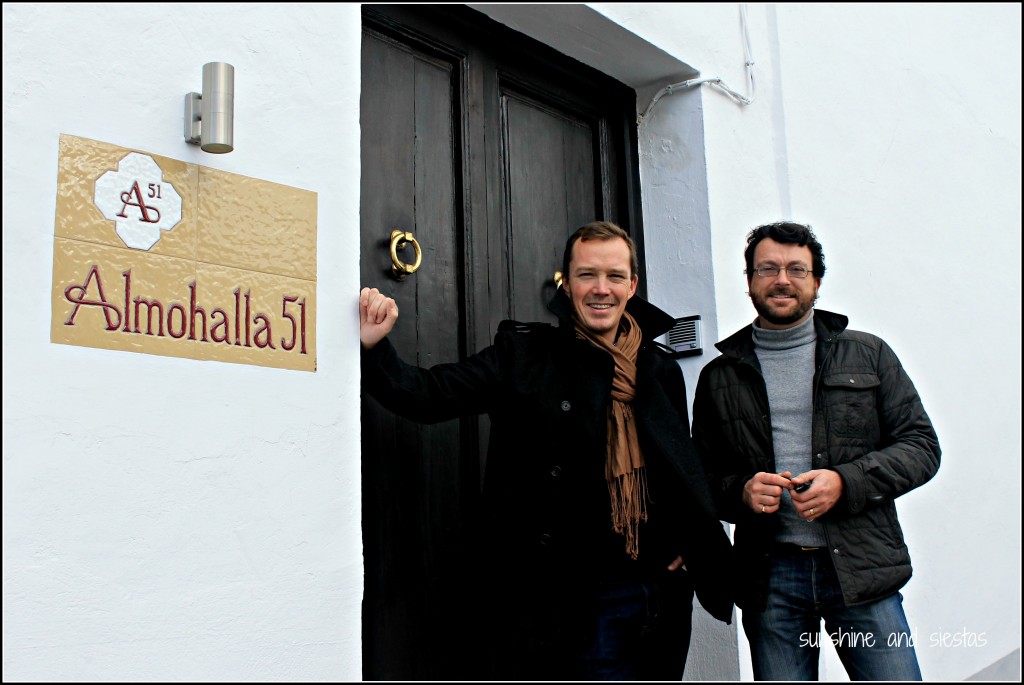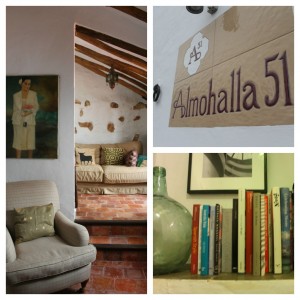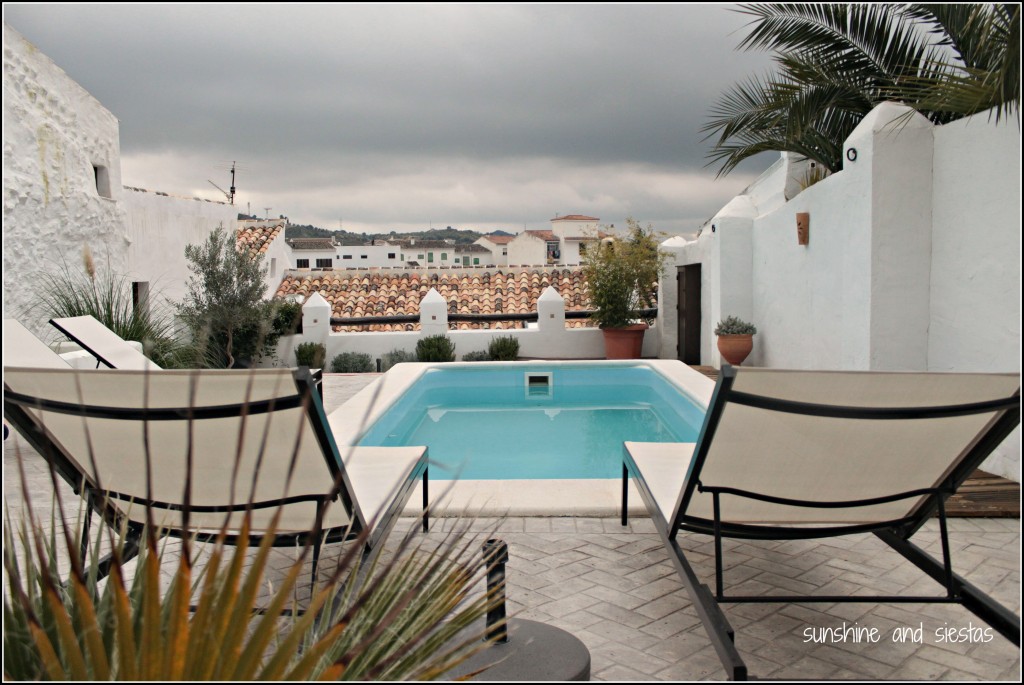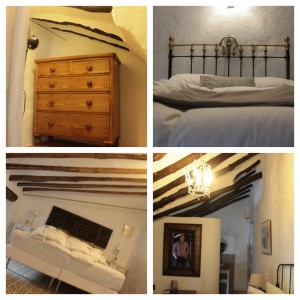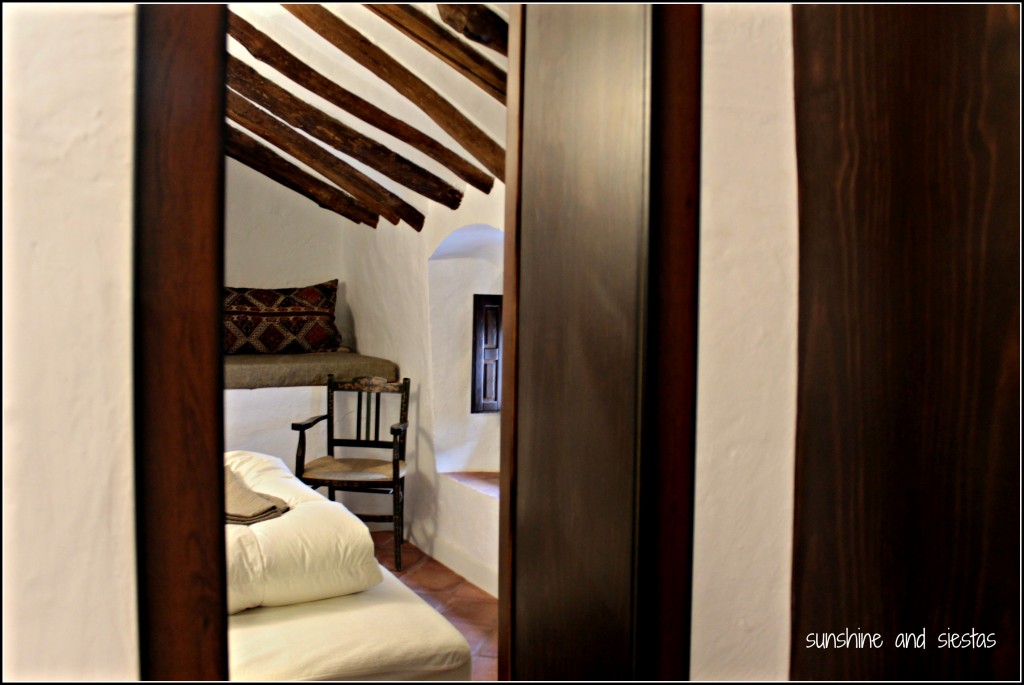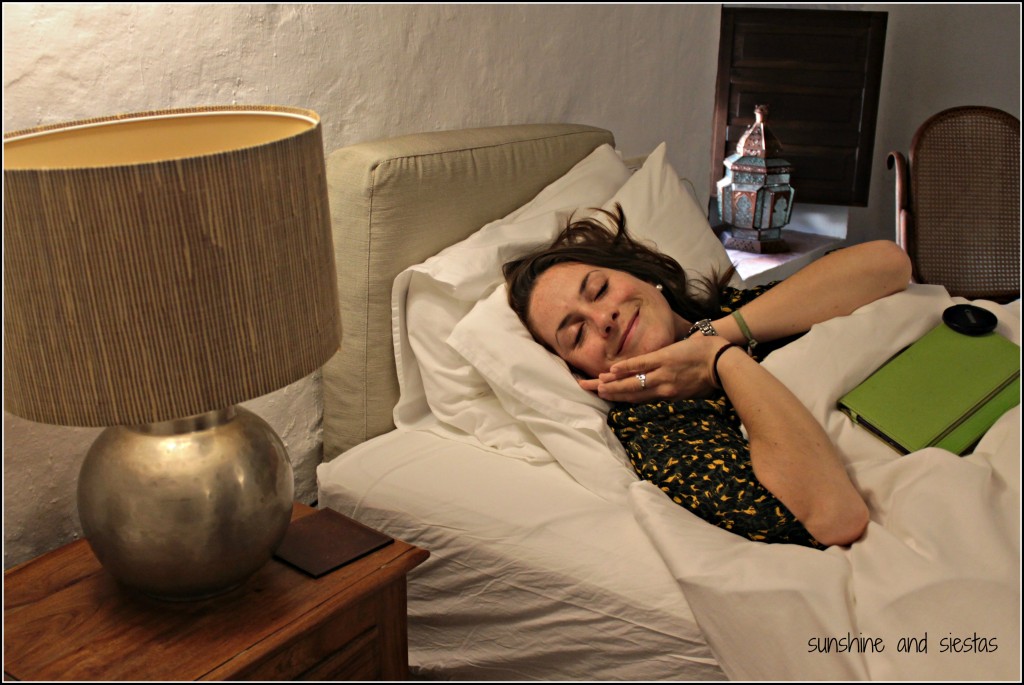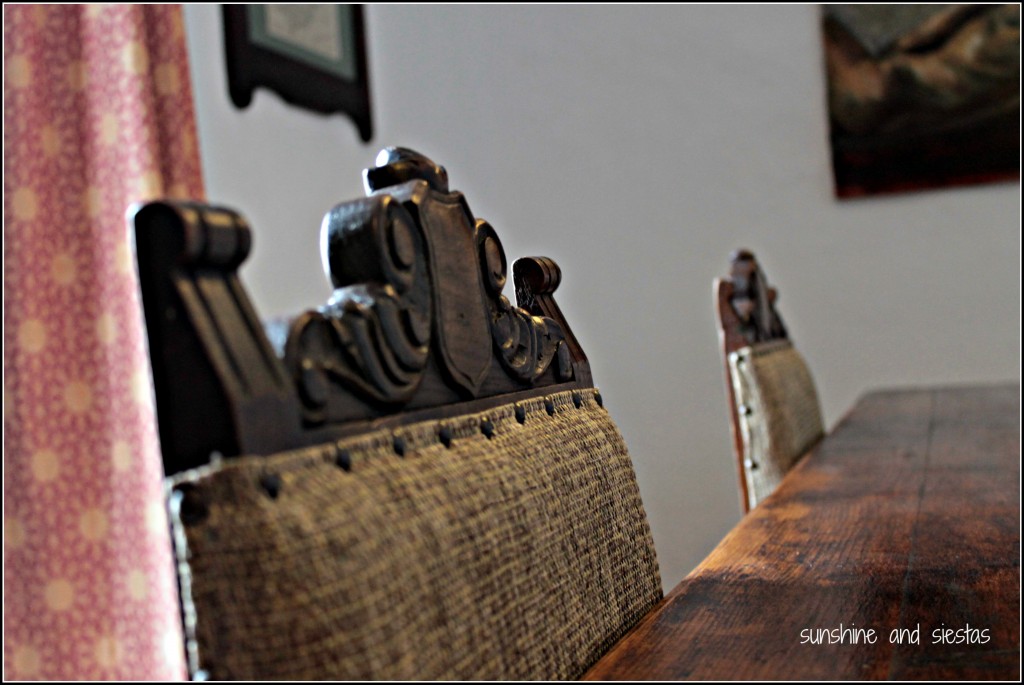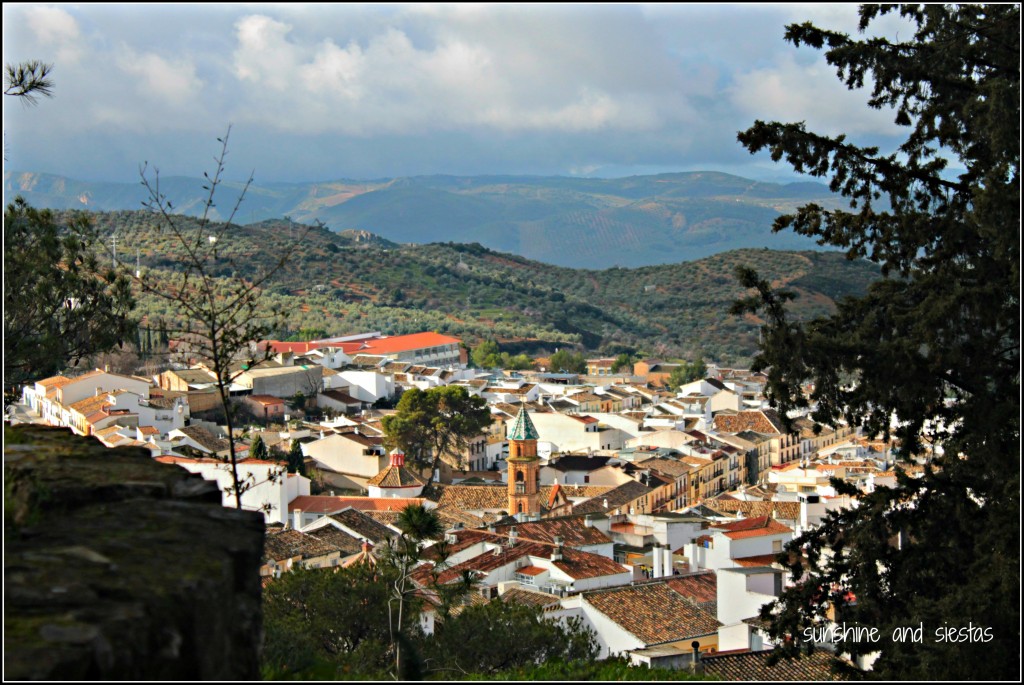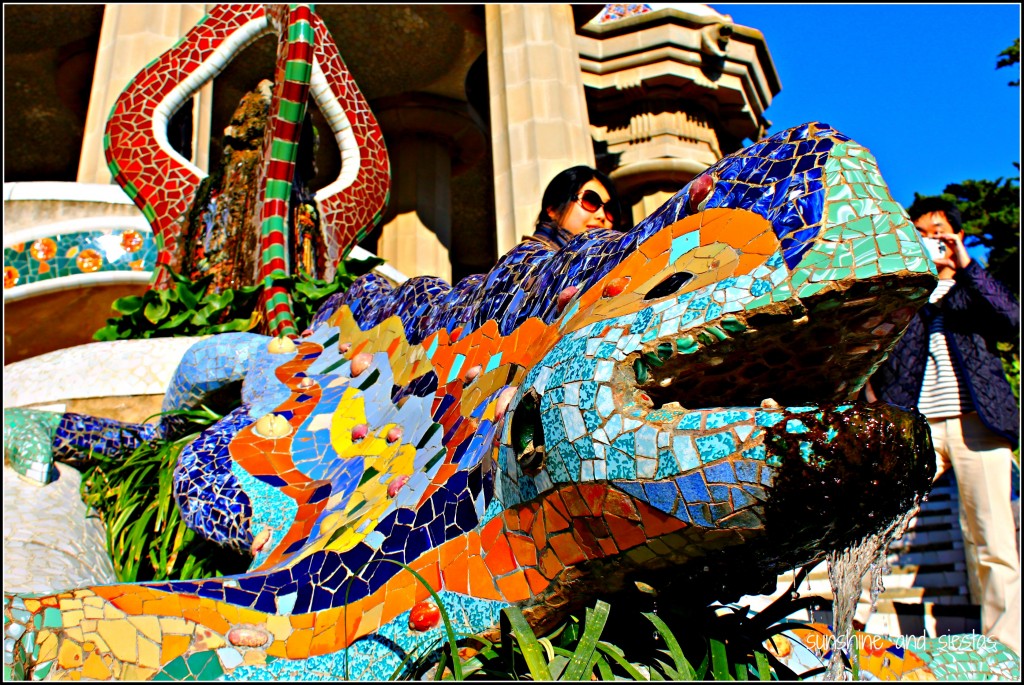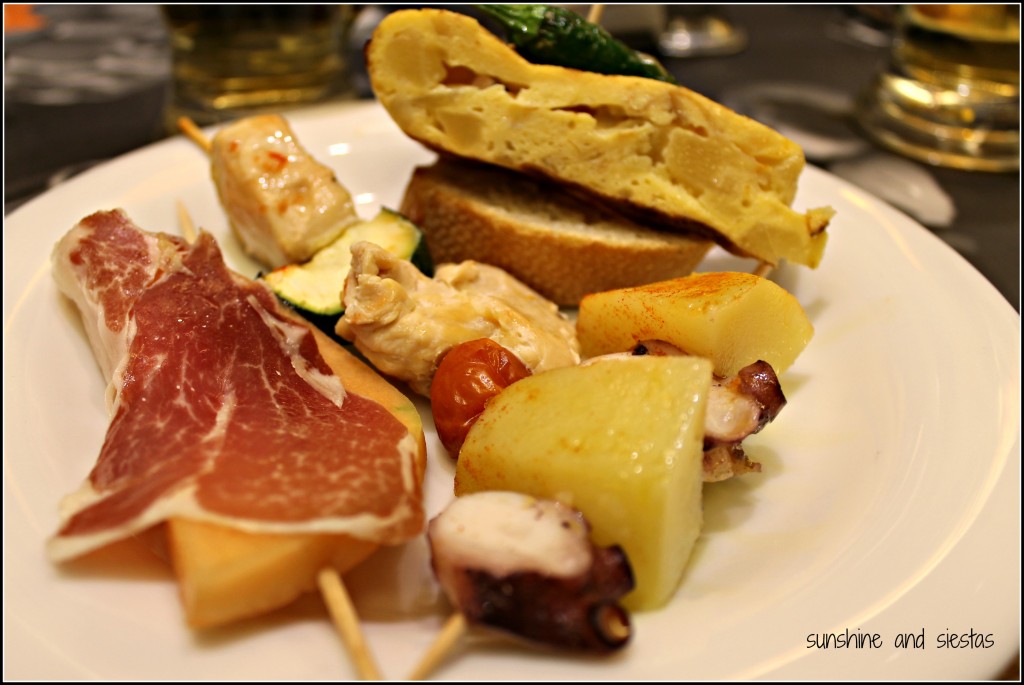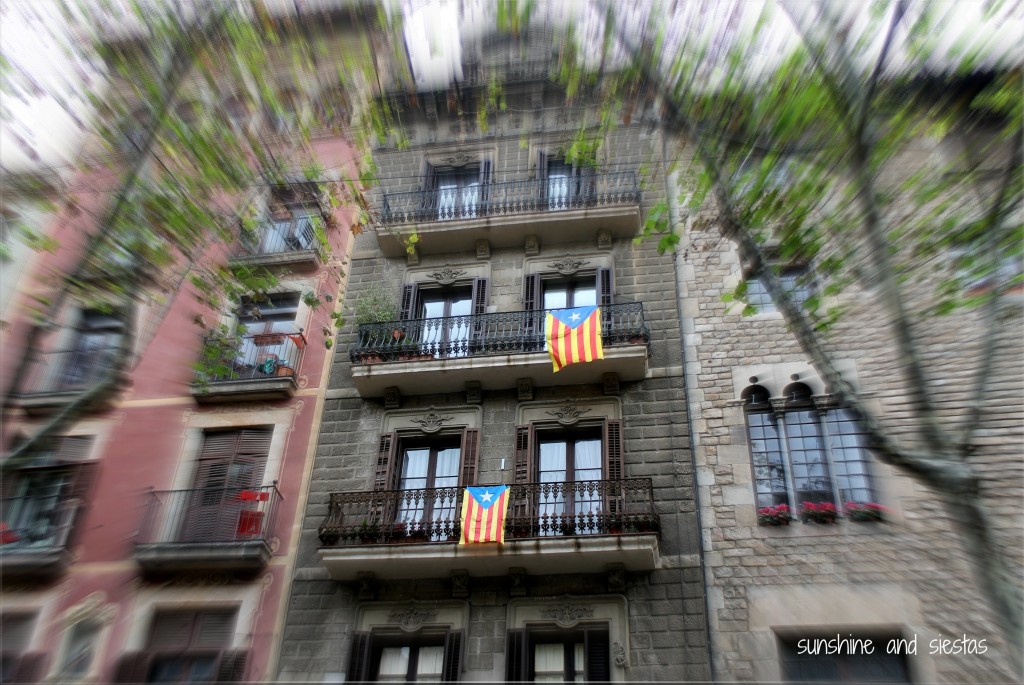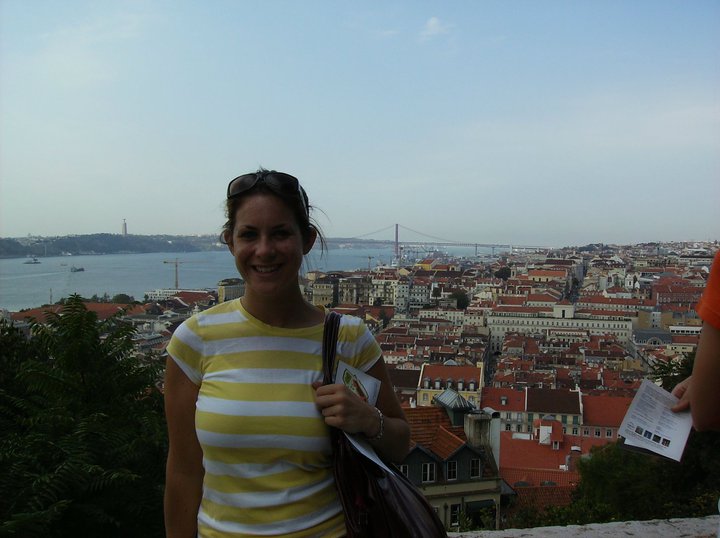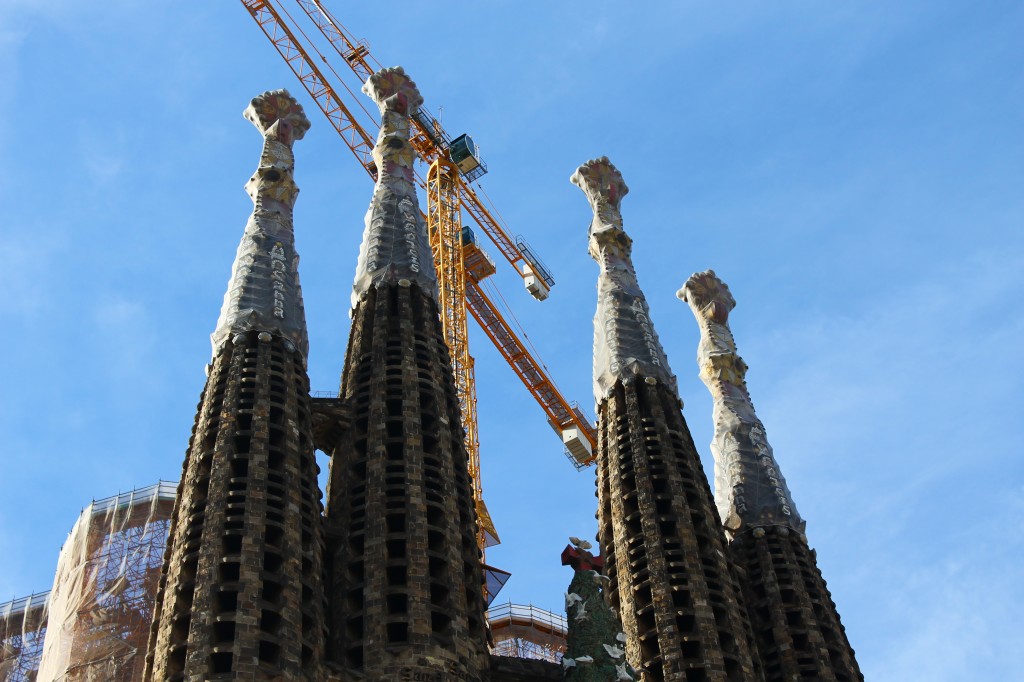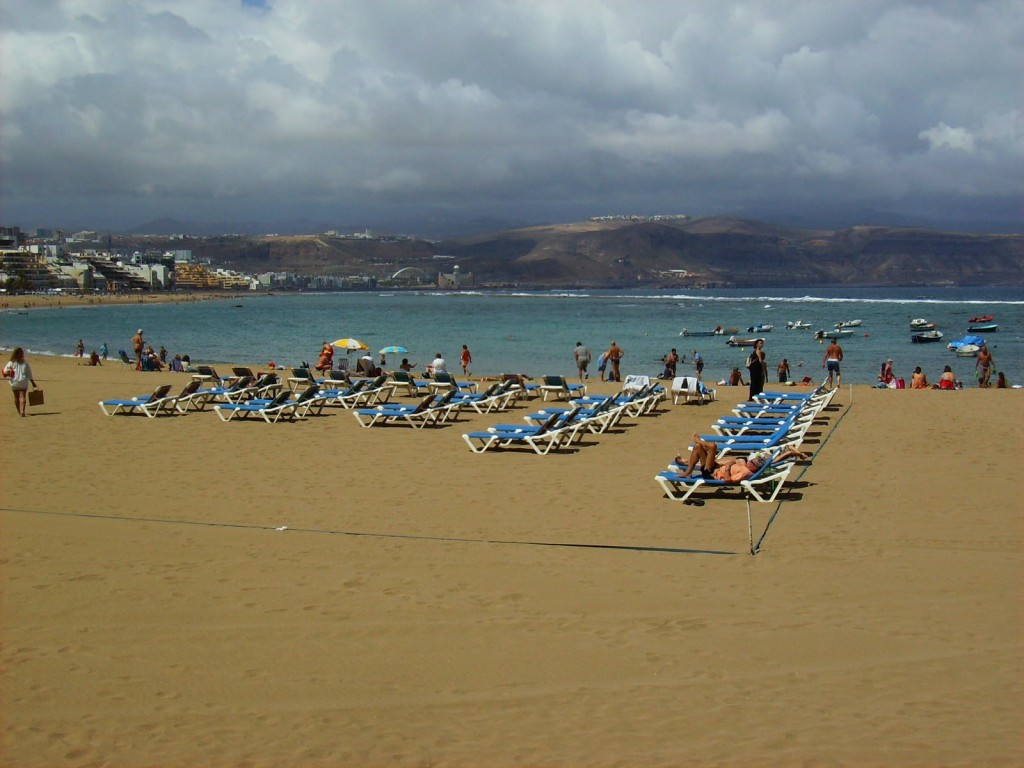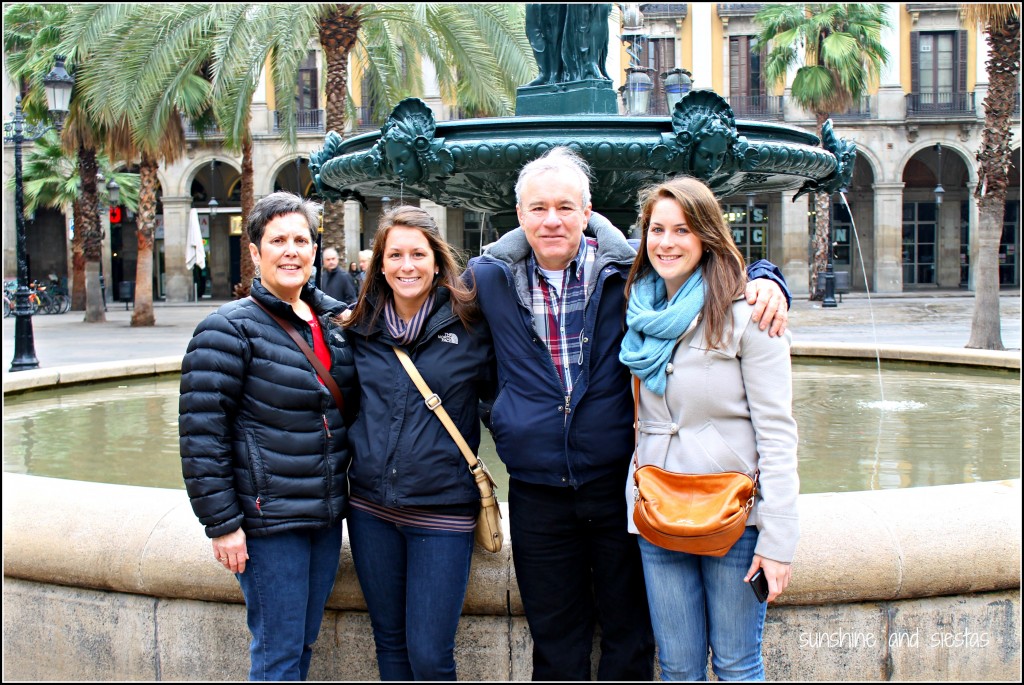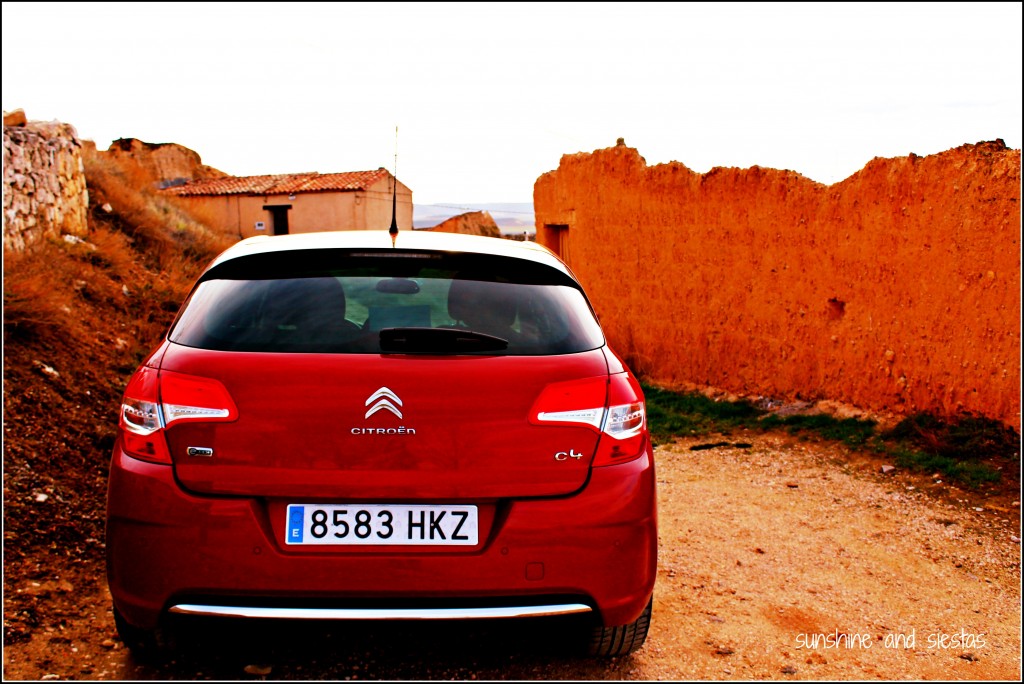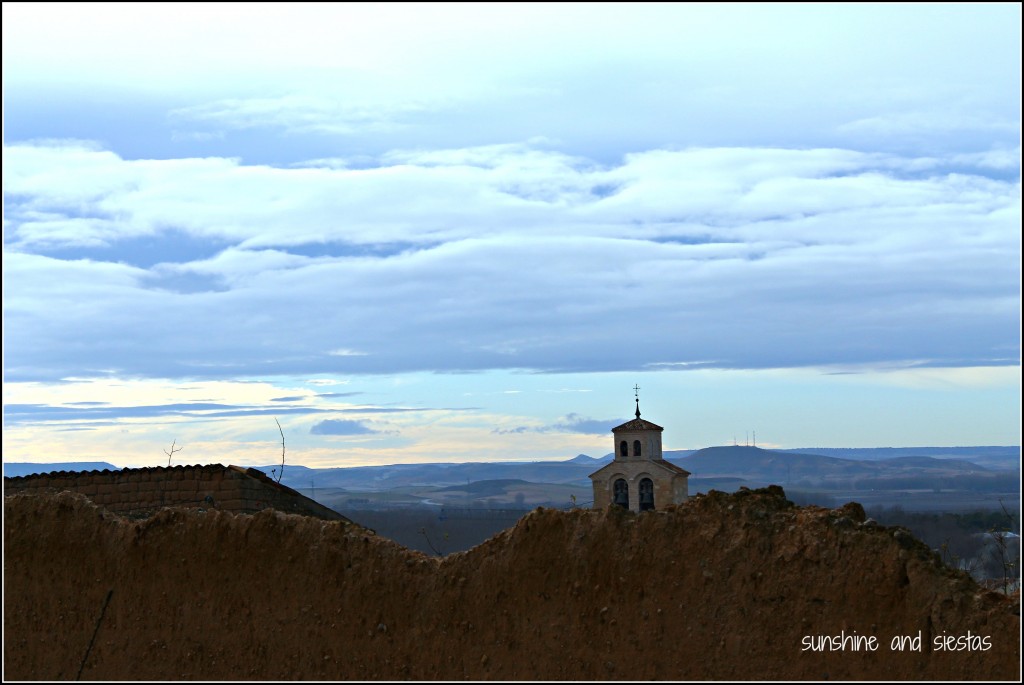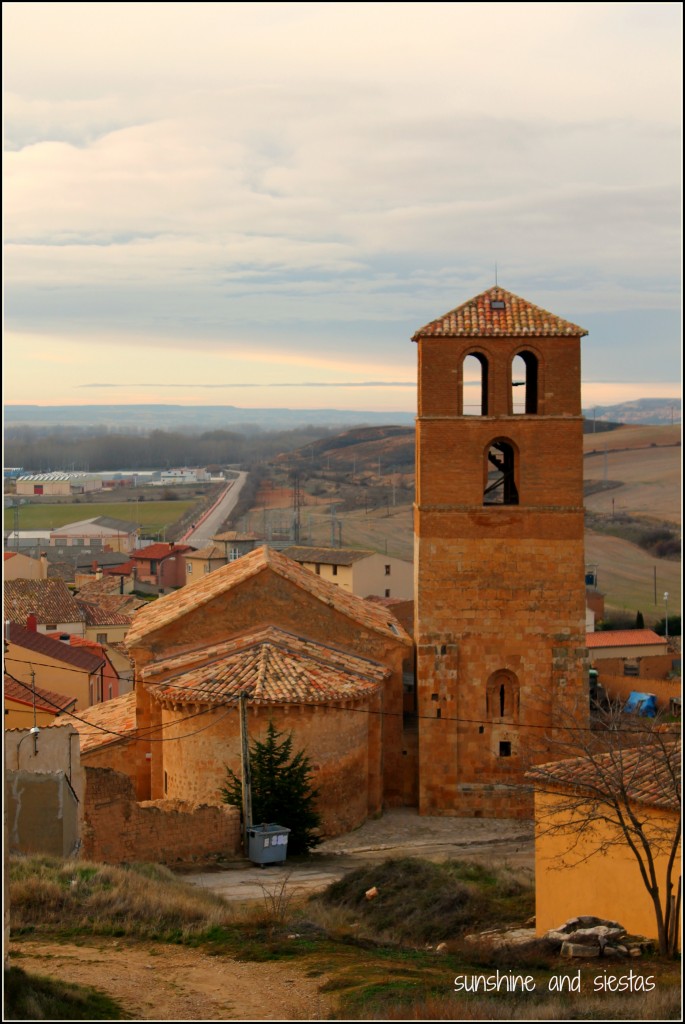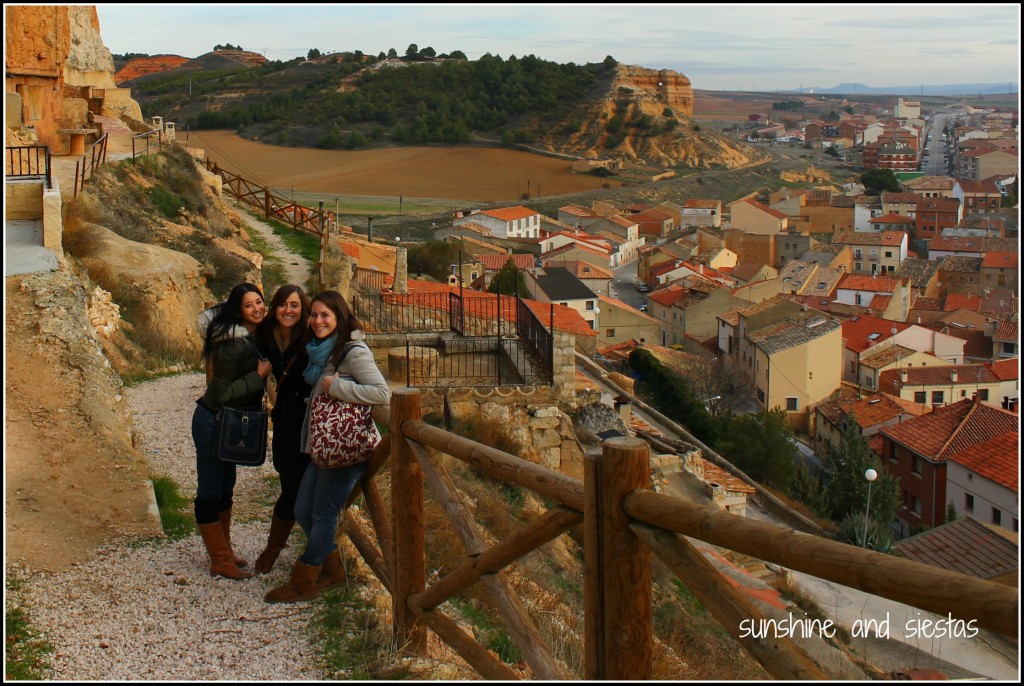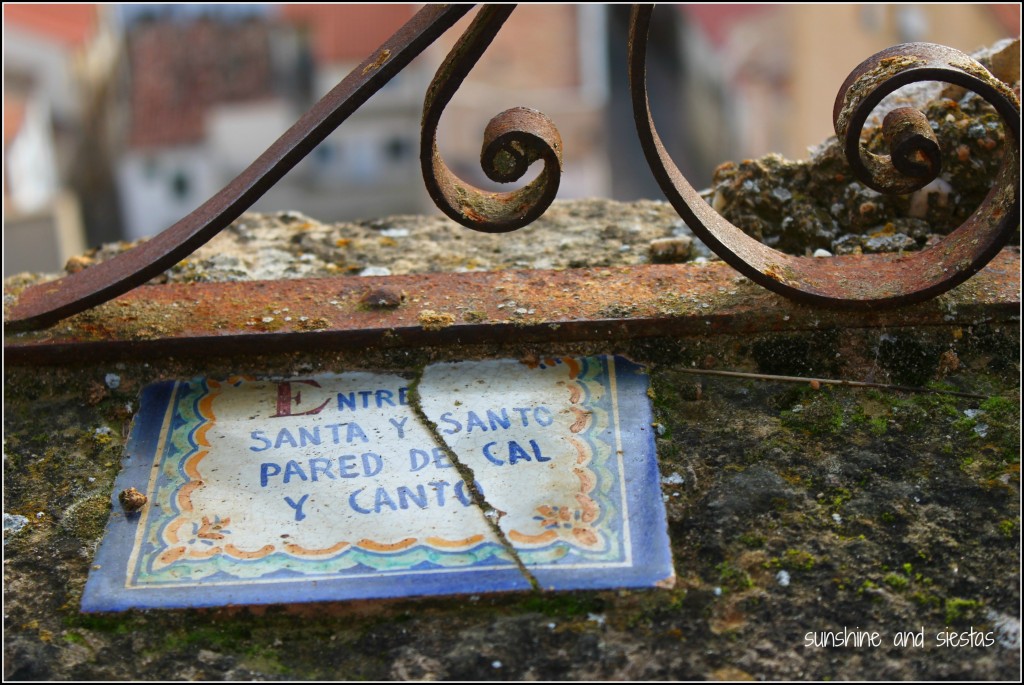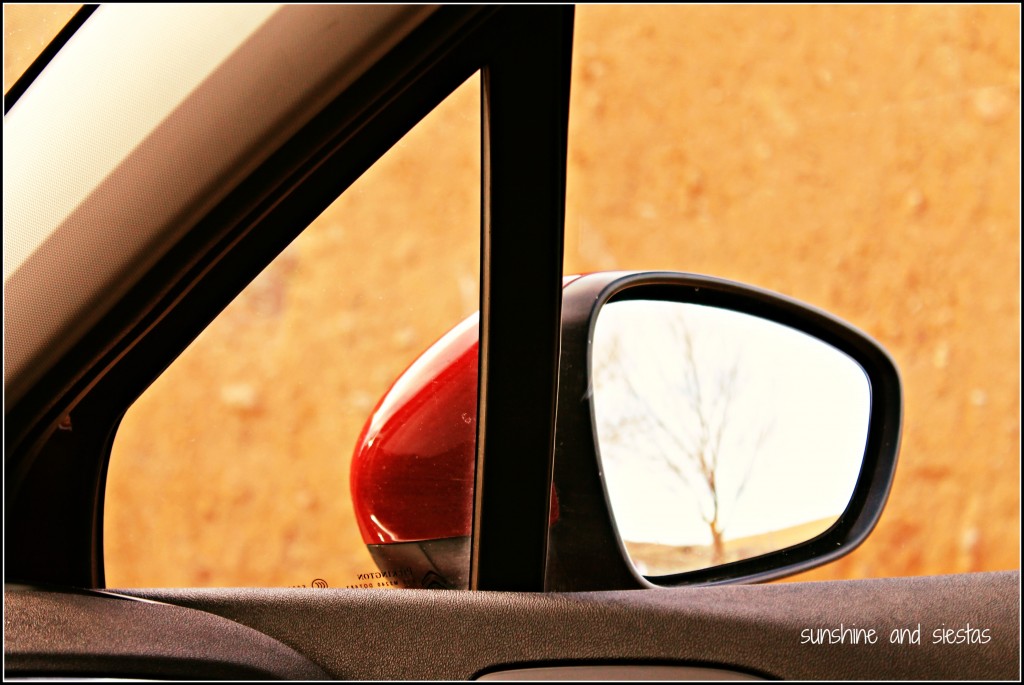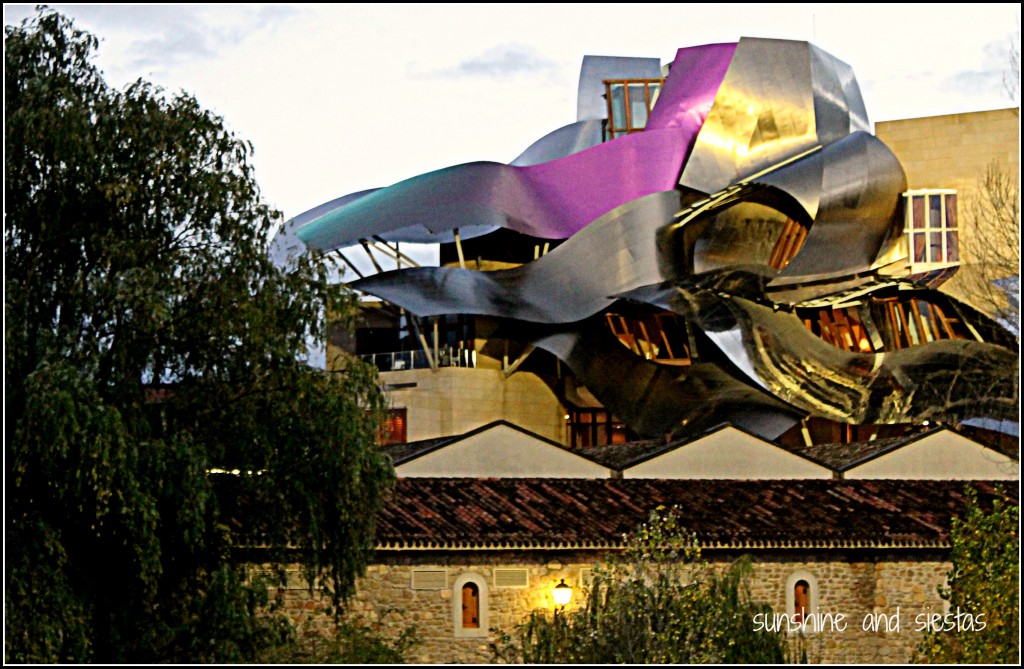Sending special thanks to the dozens of you who participated in my giveaway with Your Spain Hostel for a 30€ voucher. I’m thrilled to announce that the special winner is Revati!! Please get in touch, guapa, and I’ll relay all of the details! Speaking of staying in Spain…
If only the walls of Almohalla 51, an ancient rural house cum gorgeous boutique hotel in Archidona, Spain, could talk.
“The whole place was decrepit, you see,” David tells us on the quick ride over from Antequera, where he’s met us at the train station. “Just absolutely uninhabitable.”
David and his partner, Myles, bought the house – which hadn’t been lived in for fifty years – and the one adjacent to it, merging the two into a five-bedroom hotel. The 14-person family who sold them the houses were true archidoneses, and the house had the original beams intact. The place is steeped in Andalusian charm.
Upon entering the cozy entrance hallway, David offers us a glass of Mahou beer and some salty olives. “You know,” he starts, topping off his own cerveza, “Myles’s family had been coming down for years and living on the Costa del Sol. There’s this great picture of his mother dancing with the wife of the owner of Mahou before the family sold the company to San Miguel.” Like many British expatriates I’ve met in Spain, there is always some kind of story, some legend, anchoring them to Spain. Myles summered in Estepona during his youth before he and David decided to relocate to Spain permanently, choosing picturesque Archidona as their new home.
Collecting our beer glasses as Lana del Rey crooned from the nearby reading nook, replete with books and old editions of magazines in both Spanish and English, David and Myles offer to show us the rest of the property. Passing through a small courtyard just behind the entrance hall and up a set of stairs, a small but inviting pool was the focal point of another patio and small bar.
“We operate on an honesty policy,” Myles explained. At any hour of the day, guests are invited to help themselves to refreshments, tea or coffee. My guest, Hayley, duly noted that the sweeping views of the nearby mountains and a dip in the immaculately kept pool would be worth coming back for in the summer.
I curiously notice a wrought iron Osborne bull nestled next to a small olive tree just in front of the pool. David, sensing my curiosity, tells me that the tree had actually been brought over from London when they moved to Archidona 18 months ago.
“Does it fruit?”
“Yeah, yeah. But the birds enjoy it more than we do.”
Inside, we are shown to our room. Wood beams stand out against the whitewashed walls, and Andalusian hallmark. Two fluffy twin beds with linens brought in from Mumbai stand next to one another and a weathered wardrobe. A private bathroom features smooth, gorgeous tiles and modern fixtures. Setting down our bags, we continue through to the other guest rooms.
The duo enjoy pointing out each part of the house that had been left over by its previous owners –antique headboards adorning the beds where they’d been born, an interior patio where horses had been led – as well as the treasures Myles’s mother had found in antique stores and estate sales around England. The other bedrooms each have their own charm, like a split-level with a cavernous shower or a crystal chandelier. I suddenly can’t wait to dive into bed and relax with a book, convinced that the fresh air and sleepy midday would lend to a gorgeous rest.
After lunch in town at Bar Central, we join guests Mary and Thomas, an infinitely friendly and interesting Irish couple, near the fire. Their first trip to Spain, they recount us their tribulations driving on the other side of the road and trying to understand the bullfighting museum in Antequera.
“Dinner’s at half eight girls, but come round earlier for a cocktail.”
Squashing any girlish desires, we refrain from jumping on the small mountain of bed and instead rest up for the evening. The last light of the day is streaming in from the skylight as we read in bed. I drift off for over an hour, lost in the soft mattress and heaps of blankets.
Aperitifs are served promptly at eight, and we all sit round the fire chatting about whatever comes to mind – travels in Spain, language blunders, Mary and Thomas’s work as anthropologists, David and Myles’s favorite scenes as the resident guiris in Archidona. As sweet smells waft from the hallway we are ushered into the dining room.
“Yep, well several of the sisters claim to have been born in this very room,” David had told us earlier, but now the room is crowned by a gorgeous hutch with carvings related to the city of Granada – pomegranates and a knight – and a rustic wooden table whose legs were the originals. While doing the work on the house, Myles used local artisans to give the house a makeover rooted in both old and new.
What follows is one of those epic meals where your wine glass is never empty, your belly is full and the conversation and company can’t be bettered. We had a chutney made of local pears with warm goat cheese and puff pastry, followed by succulent lamb, steamed broccoli and papas a lo pobre. After nearly five hours, a rehashing of Catalonian independence and the draw of the Camino de Santiago (which Hayley and I are walking this summer), and a coffee and gin tonic, Hayley and I barrel into the beautiful Plaza Ochavada for a drink.
The next morning, David and Myles serve the four of us breakfast in the dining room, as rain had hampered plans of having breakfast on the terrace. I dig into coffee, fresh orange juice, natural yougurt with honey and cinnamon, fruit and toast with fig jam and cheese. David invites us to walk up the hill to the bastions and hermitage, affording us the views of the surrounding countryside. From this vantage point, one can see the nearby provinces of Sevilla and Cordoba, as Archidona is practically in the geographic center of Spain and just 45 minutes from Malaga’s international airport.
David comments on the city’s raucous festivals, from a bullfight in the oval of Ochavada to the pedigree dog shows. Their own dog, Ronny, barrels up and down the hill, bounding around the hermitage where faithful crawl on their knees during Holy Week and to the city walls at the top of the mountain. These walls can talk on their own, too, of course – of the Moorish Reconquista and the rebuilding of one of the city’s most recognizable landmarks.
And we’re listening.
If you go: Almohalla 51 is located in the village of Archidona (Malaga), near the geographical center of Andalusia and the A-92 motorway. Its five bedrooms are charged based on high and low season, and include breakfast, housekeeping and all local taxes. Guests under age 14 are not permitted.
My stay at Almohalla 51 was graciously provided by David and Myles. All opinions, as always, are entirely my own. If you stay, tell them I sent you!
